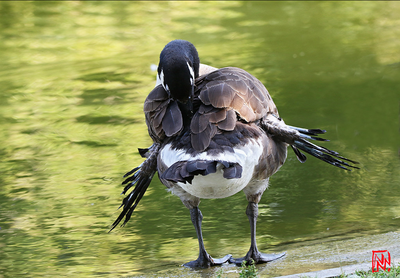Going to Arpenaz waterfall via the Ilettes lakes

Sallanches
Going to Arpenaz waterfall via the Ilettes lakes
Easy
2h45
10,6km
+125m
-122m
Embed this item to access it offline
Along this trail, learn about the dangers of feeding ducks with bread and the geological history of these lakes and waterfalls.
Attachment
- Downloadpdf
Cascade-de-l'Arpenaz-par-les-lacs-des-Ilettes
Credit: Points d'intérêts du parcours - Asters-CEN74
4 points of interest

@Mamnic47  Fauna
FaunaUnexpected dangers of bread
Ah, the infamous act of throwing bread to birds!.. There's always someone who tries to win the ducks' hearts by throwing bread at them as if they were the pond's celebrities. Bread is hardly an ideal treat for our beloved ducks, or any other wild animal for that matter. It will bloat in their stomachs, causing severe digestive problems and providing them with a useless nutrient that is harmful to their growth. Weakening their immune systems, ducks develop diseases. These include the notorious duck flea, but above all "angel wing": a disease that causes malformed wings, rendering ducks unable to fly at all.
@julietteBuret  Geology
GeologyRock folding
The Arpenaz waterfall is the 3rd highest waterfall in France (270 m) and has been classified as a protected natural site since 1991 due to its geological importance. Rock folds deforming the geological structure can be seen around the waterfall and on the mountain range above the Ilettes lakes. These are known as schists, representing a type of rock rather than a specific type of natural stone. The schist rocks include irregular, textured and layered rocks. These folds are witnesses to Alpine orogenesis: the collision of tectonic plates that created the Alps.
@2016 Soldánová et al.  Fauna
FaunaDuck flea
Swimmer's itch isn't just caused by ducks! Known as trematodes, the parasites responsible for this illness are found in the form of swimming larvae called cercariae. The parasite requires two hosts in order to develop. The first is the duck, while the second intermediate host is a freshwater snail from the gastropod family, called a limnea. The parasite cannot survive on its own without any of these hosts. Humans are merely an accidental host in this complex cycle. Before dying, the parasite causes a mild but unpleasant skin reaction. Taking a shower just after swimming reduces the risk.
@simonlac  Lake
LakeMan-made lake and a motorway
The construction of the motorway in 1974 led to the creation of a man-made lake. In 1977, the Ilettes lakes were formed on the location of a former excavation site where the materials for the motorway had been extracted. This construction contributed to the “artificialization” of the land, harming the quality of groundwater and altering the natural water cycles and the local ecosystem. However, the creation of these lakes also serves as a balancing measure, with the creation of a fishing reserve, a leisure centre and a benchmark for biodiversity in the third lake.
Description
From the parking area, cross the historic bridge of Saint-Martin dating from the 18th century. Return to the center of Saint-Martin sur Arve by crossing it again. Turn left after the bridge over the Reninge stream to access the trail alongside the Arve river's right bank until you reach the lakes. After you reach Ilettes lakes, cross the footbridge over the Crève-Coeur stream. You will see the 270 m-high Arpenaz waterfall on your right. Continue straight ahead along the Arve river until you reach the stream, which flows up to the waterfall across the road. Return via a forest trail signposted "Luzier and Ilettes lakes" starting at the end of the parking lot. Once you reach the village of Luzier, head back down towards the Arve river along the road. Follow the trail to the left that leads to the lakes. You can walk around the lakes to the left and then go back to the starting point.
- Departure : Saint-Martin parking area, Sallanches
- Arrival : Saint-Martin parking area, Sallanches
- Towns crossed : Sallanches
Altimetric profile
Recommandations
Beware: many people on mountain and hybrid bikes also use this path to get to the lake. Keep to the right to leave enough space for everybody!
Information desks
Transport
Summer shuttle bus departing from Sallanches town centre or the train station. Bus from Geneva and Bonneville
Access and parking
Take the D13 road towards Cluses and park in the car park on the left just after the bridge at St-Martin-sur-Arve.
Parking :
Saint-Martin sur Arve parking area
Report a problem or an error
If you have found an error on this page or if you have noticed any problems during your hike, please report them to us here:
